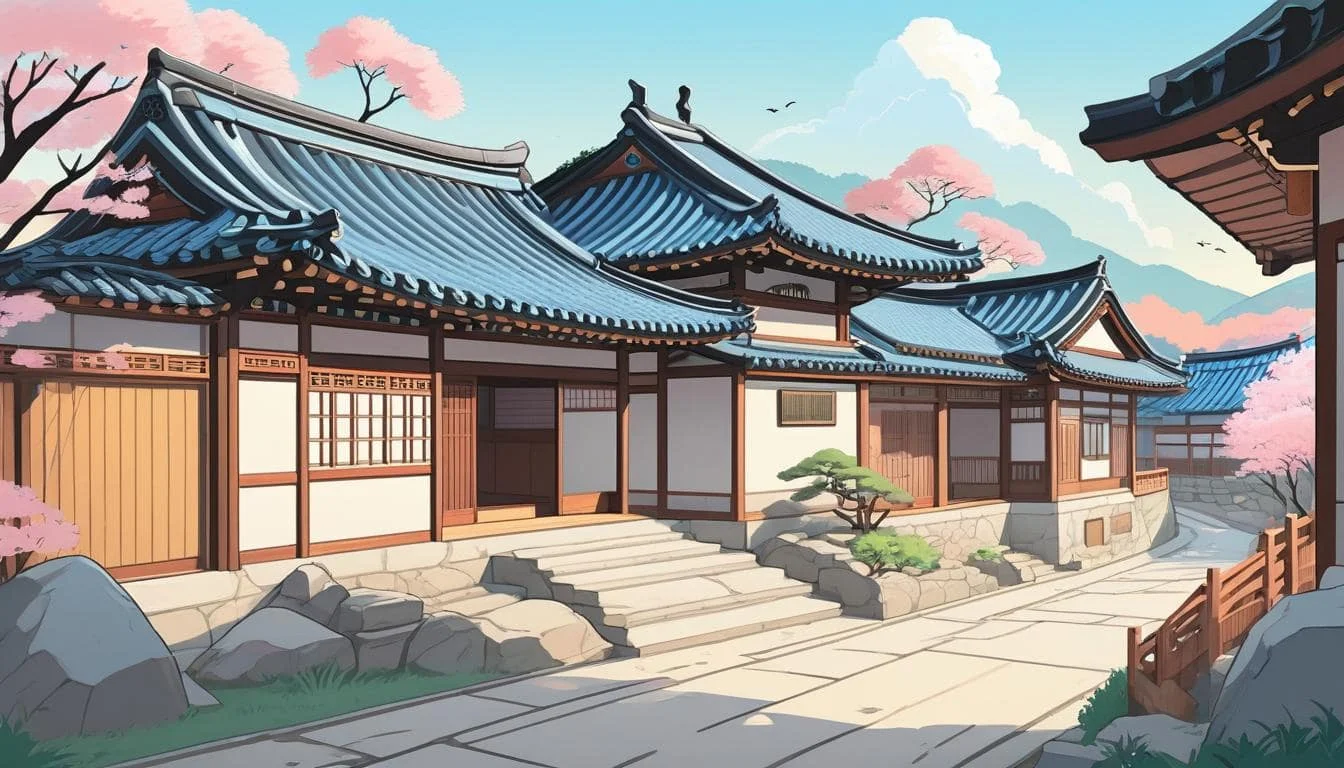Introduction
Albeit glass towers and smart homes dominate, the Hanok (한옥) remains a soulful architectural vision of Korea’s ties with nature, tradition, and simplicity. Adorned with the sensibility of nature and harmony, these traditional Korean homes provide a dignified escape from the pressures of modern living. Yet Hanok living is not simply about sentimentality; it’s about the ever-present reality that continues to inspire sustainable architecture and contemporary design trends.
The Essence of Hanok: A Harmony Between Nature and Architecture
In contrast to modern constructions, Hanok houses follow the traditional Korean value of Baesanimsu (배산임수), whereby a mountain is behind a home and a river in front. This gives energy (gi, 기) to flow while maintaining the balance and peace around.
Salient Features of Hanok Houses
- Ondol Heating: Traditional Heating
It is an underfloor heating system that heats the house during winter using heat from stones.
Still in use today in many Korean houses, this system has primarily shaped the development of Hanok architecture. - Cheoma: The Beautiful and Significant Eaves
The extended eaves give protection against summer sunshine and heavy rain while naturally cooling the house.
The curves of the eaves thus add a unique beauty to the roof of the Hanok. - Hanji: Traditional Korean Paper
A semi-transparent paper used for doors, windows, and walls, allowing natural light to diffuse softly into the interiors, creating a warm feeling.
It also provides insulating and breathing capability that keeps the interiors fresh. - Daecheong: The Open Wooden Floor Hall
A central open-air hall ensuring cross-ventilation, thereby great in summer cooling.
A space for family and guests to come together for community living.
Living in a Hanok
Life in a Hanok transcends aesthetic appreciation; it marks an immersion into a serene and contemplative existence.
- Nature Connection 🌿: Hanok utilizes wood, stone, and clay, thus finding these houses in absolute harmony with nature.
- Minimalist Living 🏡: Hanok interiors tend to be quite simple, uncluttered, thus acting as an embodiment of traditional Korean values like balance and moderation.
- Tranquil Atmosphere ☯️: The peaceful setting is offered by the natural materials, soft lighting, and the presence of traditional courtyard gardens (madang, 마당).
Hanok Revival: Merging Tradition with Modernity
While Hanok architecture has been around during the Joseon dynasty (1392–1897), it finds strong wayback entrance to modern Korea.
- Luxurious Hanok Hotels & Cafés
Boutique hotels such as RakKoJae (락고재), located in Seoul, let tourists enjoy staying in a Hanok that was beautifully restored with modern amenities.
Hanok-related cafés in Bukchon and Jeonju present a cozy touch of a link between tradition and modern-day coffee culture. - Eco-Friendly and Sustainable Housing
Hanok houses are becoming more and more popular as dwellings because of their natural materials, energy efficiency, and long life cycle.
Some architects are retaining the traditional structures and integrating modern heating, solar panels, and smart home features. - Hanok Villages: A Cultural Experience
Experience that cultural immersion by staying, donning Hanbok, and roaming about Korea’s traditional lifestyle at Bukchon Hanok Village (북촌한옥마을), Jeonju Hanok Village (전주한옥마을), and Andong Hahoe Village (안동하회마을).
Why Hanok Living is More Relevant Than Ever
As the entire world moves to sustainable living and a minimalist design, so too do Hanok homes, which offer an eternal design model for present-day inhabitations.
- Sustainability: Use of eco-friendly materials while naturally controlling temperature regulation.
- Well-being & Mindfulness: A coo, mindful pace of life that reduces stress
- Inspiration: Modern designers are actually integrating Hanok components into contemporary interiors all over the world.
Conclusion
Life in a Hanok is about tradition but also about drawing on a lifestyle that happens to be synergetically related, and resonates even in today’s modern world with man’s nature. Be it a home, hotel, or café, Hanok still stands as the essence of Korea’s architectural wisdom and identity. As sustainable and meaningful living continues to become a growing audience, the tranquil beauty of Hanok keeps inspiring people around the globe.




